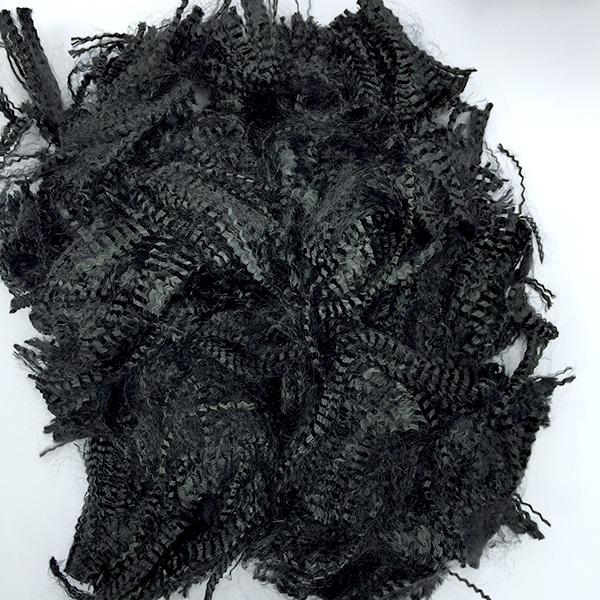Contact: Allen zhang
Mobile: +8618657301314
Tel: +86-573-88236564
QQ: 307160103
Email: allen@aramid.biz
Address: Tongyuan Road, Tongfu Industrial Park, Tongxiang City, Zhejiang Province
Website:en.surefrp.com
It was found that kevlar aramid staple fibers were treated with oxygen plasma to produce reactive groups on the surface, and then ethylene was polymerized on the surface of the fibers by a ziegler-natta catalyst. After modification, the mechanical properties of the fiber reinforced composite material are improved, and the interfacial adhesion properties of the fiber/rubber are improved. Jlshi et al. Plasma polymerization of monomeric pyrrole or acetylene on the surface of aramid fiber can produce a film coating of 100-200 nm, thereby significantly improving the bond strength between aramid and rubber; the film structure depends on the polymerization conditions. When the plasma graft polymerization is carried out under low power and high pressure conditions, the interfacial adhesion state of the aramid/rubber is better.

1. After the aramid is irradiated by ultraviolet rays, it will degrade, resulting in a decrease in mechanical properties. Therefore, it should be protected from light when used.
The modification of kev-lar aramid fiber is carried out by the etching action of ultraviolet light, so that the surface of the fiber forms a wide flat groove mark, and ridges and fragments are generated, thereby increasing the specific surface area of the fiber and improving the fiber and the matrix. The physical adsorption force and the ability of the matrix to diffuse into the interior of the fiber improve the interfacial adhesion between the two.
The UV surface treatment equipment is simple and easy to operate, but it may affect the mechanical properties of the aramid fiber. At present, there are few reports on domestic and foreign research.
2. Ultrasonic treatment
The micro-jet generated by ultrasonic cavitation has impact and shear on aramid, which produces two effects: 1 causing longitudinal splitting or cracking on the surface, fibrillation and increasing its specific surface area; 2 in cavitation Under the high temperature and high pressure generated by the action, the cleaning medium enhances the wettability of the fiber, promotes the hydrolysis of the fiber, and increases the active groups on the surface.
It was found that before and after ultrasonic treatment, the relative molecular mass, crystallinity and grain size of the domestic para-aramid did not change much, but the morphological structure and ultrastructure changed significantly, and the fibrillation was remarkable. As the ultrasonic power increases and the pretreatment time increases, the degree of fibrillation increases.
The effects of ultrasonic treatment of different cleaning media on the surface morphology of twaron aramid fiber and its adhesion to natural rubber/styrene-butadiene rubber were studied. It has been found that in the distilled water medium, the cavitation of the ultrasonic wave can clean and etch the surface of the fiber; in alkaline or acidic medium, the ultrasonic treatment can accelerate the hydrolysis of the fiber, increase the reactive groups on the surface, and increase the fiber. Electrostatic adsorption and chemical bonding between the rubber and the rubber to improve the adhesion of the fiber to the compound. The preferred mass fraction of the cleaning medium sodium hydroxide solution and the sulfuric acid solution is 0.2, the suitable treatment time is 10 and 15 min, respectively, and the extraction force of h reaches 85 and 106 n, respectively.
3. γ-ray treatment
The surface of the aramid can be etched using gamma rays to produce free radicals that can react with the surface coating. This method does not require a catalyst or an initiator and can be carried out at room temperature, and is a promising modification technique.
The armos aramid fiber soaked in the epoxy resin/acetone solution was subjected to γ-ray irradiation modification treatment. It was found that after γ-ray irradiation treatment, the surface roughness of the fiber increased, resulting in an increase in specific surface area and an increase in oxygen content on the surface of the fiber, indicating an increase in oxygen-containing functional groups (polar groups) on the surface of the fiber after treatment.
Contact: Allen zhang
Mobile: +8618657301314
Tel: +86-573-88236564
QQ: 307160103
Address: Tongyuan Road, Tongfu Industrial Park, Tongxiang City, Zhejiang Province
Website:en.surefrp.com

